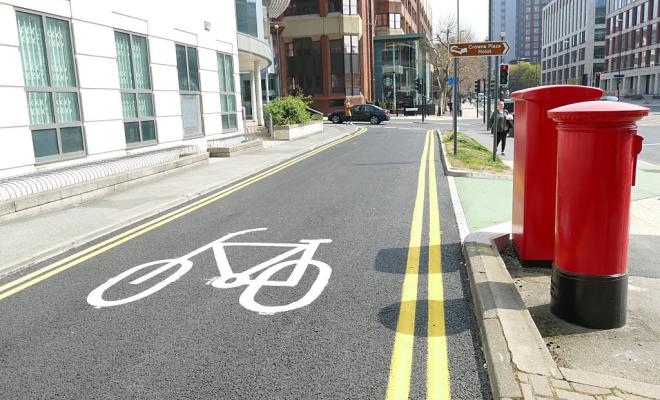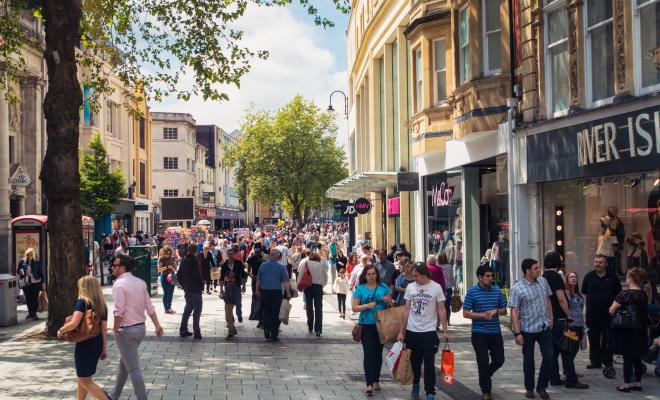09 Nov 2023
Councils, climate and influencing others
As well as taking action on the climate and nature emergency themselves, councils have a responsibility to persuade and support other organisations, businesses and local bodies to do the same. Councils that have declared an emergency must not only make climate and nature central to all their own decision making, but also bring this mindset to all the forums they take part in. To do this councils should:
- Ensure their sub-national transport body strategy is in line with carbon budgets (applicable in England only). Sub-national transport bodies are regional groupings of councils that discuss and decide what needs to happen on transport in the region. There are 8 bodies in England, including Transport for London. Often these bodies haven’t taken sufficient account of the climate crisis in their strategies, for example supporting more road building and airport expansion. Your council should take a lead in making sure this changes in its sub-national transport body.
- Provide support to small and medium-sized enterprises (SMEs) to access funds and expertise, so that they can contribute to carbon reduction, nature restoration and the growth of the green economy. SMEs and businesses often don’t have the expertise or capacity to fully understand what they need to do to address the climate and nature emergency. Councils can bring these businesses together and give them advice, including on what funds are available to help them change. Most councils have forums to help advise and network businesses. They should ensure that part of the work of these forums is to support businesses on climate change and nature restoration.
- Use influence with others, for example with schools to ensure the buildings are zero-carbon and purchasing is green (eg meals follow the official Eatwell Guide on healthy eating and most menu options are plant-based, with less and better meat or fish as other options). With many schools becoming academies, councils have less control over some issues like school meals. But they can still use their voice to encourage schools to not only help young people understand the climate and nature emergency, but also take whatever actions they can to mitigate this, for example through Forest Schools and the school menu. Councils should publish a sustainable food procurement policy and strategy for all the food and catering that they either provide, contract or have control over. Councils should also encourage others, such as universities, to do the same.
The target
Councils need to show ambition on a par with the climate and cost-of-living crises. With existing resourcing and powers, a reasonable target for councils to aim for is:
To encourage and support other entities with their contribution to addressing the climate and nature emergency.
Challenges
It can be a challenge keeping up with the changing landscape of local government thanks to devolution deals and policy shifts. One key example is Local Economic Partnerships (LEPs), business-led partnerships between councils and businesses. There are 38 LEPs across England making decisions on spending to promote economic growth and jobs. As LEPs have been in receipt of considerable government funding, it’s been important for councils to influence them to prioritise green skills and jobs. But after April 2024, LEPs will no longer be funded by the UK government.
Instead, upper-tier (ie county-level) local authorities and combined authorities will take on the roles and responsibilities of LEPs. This should give these councils a more influential role (and therefore increased obligation) in developing green skills and jobs and prioritising the development of a low-carbon economy. Some LEPs may also keep going with other sources of funding, but only if they’re supported by locally elected institutions such as local authorities which would decide on their relationship with the LEP.
Although overall LEPs haven’t had a great environmental record, for example too much of their funding went into high-carbon projects like road building, there were examples of councils working positively within LEPs. It’s important that these positive initiatives, such as the North East LEP’s green skills bootcamps and the York and North Yorkshire LEP’s work on minimising waste by developing circular economies (see more detail below), are able to continue.
Councils leading the way
Some councils are already making strides to influence others, encouraging them to do their bit to tackle the climate and nature crisis. Share these examples with your council using this template email and help inspire them to take action.
South Lakeland District Council has a range of measures in place to support local small businesses, including subsidising environmental audits and advice for existing businesses, and cutting the price of advice for startups on how to set up a green and ethical business. Resulting changes from local businesses have included energy efficiency measures and more sustainable travel plans.
As noted above, sub-national transport bodies don’t have a great track record on prioritising climate change. However, England’s Economic Heartland, whose members include councils in parts of East Anglia and South East England, has included the climate emergency as a key consideration in its initial strategy, setting out an ambition for the region’s transport system to be net zero by 2040. It also aims to reduce private vehicle journeys by 5% every decade. This doesn’t seem particularly ambitious but it'll be reviewed, giving councils an opportunity to call for an increased target. Plus it’s already more progressive than many other sub-national bodies.
York and North Yorkshire LEP has set out a vision for the York and North Yorkshire economy to be greener, fairer and stronger. This includes a target for the region to be net zero by 2034, and to be the UK’s first carbon-negative region by 2040. One of its most innovative areas of work is its Circular Economy Strategy to cut waste and pollution in the area. This includes supporting “circular towns” engaging local businesses and communities in initiatives ranging from sustainable fashion to cutting food waste.
Leeds City Council has been helping schools lower their emissions, with a range of measures engaging school leaders and students. For example, Leeds schools have 2 meat-free days a week and its new Planet Friendly Menus use more plant protein and less meat on non-vegetarian days. Enfield Council requires all catered events held by the council to offer only vegan or vegetarian options. And Bristol City Council runs an annual awards scheme to influence the sustainability of food businesses in its area.
Several councils including Leeds, Kirklees and Lincoln are involved in Climate Commissions, which are a good way to bring together community groups, businesses, academic institutions and others in the local area.
Learn from others
Getting councils on board is a good way to influence the regional bodies of which they’re constituent members. But some groups have also taken a more direct approach to lobbying sub-national transport bodies.
For example, following intervention from local campaigners, Transport for the North (TfN) introduced a requirement to test its proposals to assess whether they’re compatible with the pathway to net zero. Campaigners also used the opportunity provided by TfN consultations on a revised strategy to push for stronger climate action. 154 responses were submitted directly to TfN, co-ordinated by Manchester Friends of the Earth and Congleton Climate Action Group. These pointed to where more action was needed to meet TfN’s own decarbonisation target, including more action to improve public transport and a target to cut car use.
Convince your council
You can help your council influence other entities to address the climate and nature emergency by showing that there’s lots of support for action in your community. Read our guide on building local alliances to find out how you can increase support for your campaign and make it more diverse, stronger and more impactful.
Highlighting the co-benefits of climate action can also help to convince councils by showing that it’ll deliver on multiple council duties and aims. It can also help councils to make the case to others, for example the potential for job creation or the health benefits of low-carbon diets.
Funding and powers
Councils have been warning for some time that they won’t be able to deliver action at the scale and pace commensurate to the climate and ecological emergency without additional powers and resources. Friends of the Earth has joined local government organisations, academics and other NGOs in setting out a Blueprint of what's needed from national government to support councils in key policy areas. The coalition has assessed how the government is doing so far in its progress tracker. Be sure to ask your council to sign up to the Blueprint if it hasn't done so already.
Helpful resources
Find out what progress your local area has already made on a range of topics with our handy data tool, “Near you”.
Watch our training video and learn how your council can influence others:
Find out how you can build a strong campaign to push your council to take ambitious action in this area.
Get to grips with how your council works.
Read more examples of best practice by councils.
Find out more about the co-benefits of climate action.
Find out how your council is doing by looking at its Council Climate Action Scorecard, created by Climate Emergency UK.
Friends of the Earth and the Eating Better alliance have produced guidance for local councils and community groups on how to serve and source healthier, more sustainable meals, including:
- A "Serving Better" guide for local councils
- A film documenting the inspiring story of Mandeville Primary school in Hackney
- A campaign guide to help community groups engage with their council.



